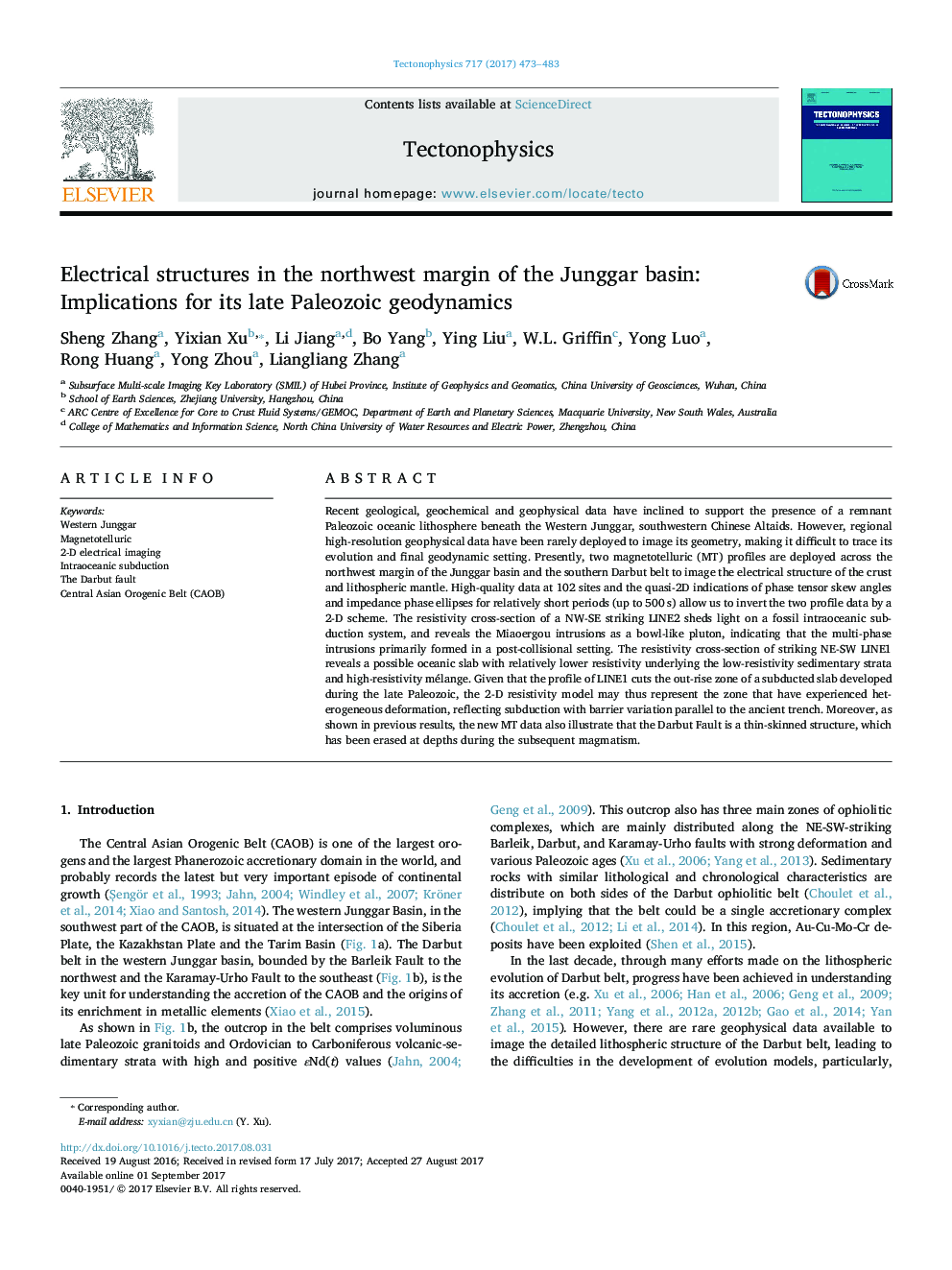| کد مقاله | کد نشریه | سال انتشار | مقاله انگلیسی | نسخه تمام متن |
|---|---|---|---|---|
| 5781487 | 1636691 | 2017 | 11 صفحه PDF | دانلود رایگان |

- Two 200-km-long MT profile data have been acquired and inverted in western Junggar.
- NW-SE resistivity profile supports an intraoceanic subduction in the late Paleozoic.
- NE-SW resistivity profile reveals heterogeneous deformation along the out-rise zone.
- The Darbut Fault expressed by high conductivity indicates a skinned shear zone.
- The bowl-like shape of Miaoergou pluton represents a post-collisional magmatism.
Recent geological, geochemical and geophysical data have inclined to support the presence of a remnant Paleozoic oceanic lithosphere beneath the Western Junggar, southwestern Chinese Altaids. However, regional high-resolution geophysical data have been rarely deployed to image its geometry, making it difficult to trace its evolution and final geodynamic setting. Presently, two magnetotelluric (MT) profiles are deployed across the northwest margin of the Junggar basin and the southern Darbut belt to image the electrical structure of the crust and lithospheric mantle. High-quality data at 102 sites and the quasi-2D indications of phase tensor skew angles and impedance phase ellipses for relatively short periods (up to 500Â s) allow us to invert the two profile data by a 2-D scheme. The resistivity cross-section of a NW-SE striking LINE2 sheds light on a fossil intraoceanic subduction system, and reveals the Miaoergou intrusions as a bowl-like pluton, indicating that the multi-phase intrusions primarily formed in a post-collisional setting. The resistivity cross-section of striking NE-SW LINE1 reveals a possible oceanic slab with relatively lower resistivity underlying the low-resistivity sedimentary strata and high-resistivity mélange. Given that the profile of LINE1 cuts the out-rise zone of a subducted slab developed during the late Paleozoic, the 2-D resistivity model may thus represent the zone that have experienced heterogeneous deformation, reflecting subduction with barrier variation parallel to the ancient trench. Moreover, as shown in previous results, the new MT data also illustrate that the Darbut Fault is a thin-skinned structure, which has been erased at depths during the subsequent magmatism.
Journal: Tectonophysics - Volume 717, 16 October 2017, Pages 473-483